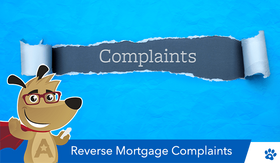How to Tap Into Home Equity Without Refinancing
Navigate the home equity landscape with confidence
Updated March 19, 2025

The prospect of being able to tap into your home equity without having to refinance your existing mortgage is something that is appealing to many homeowners. With property values as high as they are currently, many homeowners seek to leverage their home equity. In this article, we'll discuss how that may be possible and the benefits and risks associated with accessing equity without refinancing your existing mortgage.
Meet the expert
Michael G. Branson, CEO of All Reverse Mortgage, Inc. and moderator of ARLO™, has 45 years of experience in the mortgage banking industry. He has devoted the past 20 years to reverse mortgages exclusively.
What is home equity?
First, knowing exactly what home equity is and how to determine your equity position is important. Home equity is simply the difference between your current home value minus any mortgages or liens secured against the property. For example, if you have a home worth $500,000 with total outstanding mortgages/liens of $200,000, you would have an equity position of $300,000. Your equity position is ever changing as your mortgage balance(s) go up or down and your property value either increases or decreases.
Your home equity can increase in two ways:
- Paying down your existing mortgage(s). The lower the amount you owe against the property, the more equity you will have.
- Property value increases. If property values increase, your equity position can also increase if your balance is stagnant or decreasing.
Why wouldn't you want to refinance?
Whether or not to refinance your existing mortgage comes down to timing. What does the current market look like as it pertains to interest rates? How many years are remaining on your current mortgage? Are you planning to stay in this property for the foreseeable future, or are you likely to sell in the next few years and relocate?
These are the factors you need to consider when evaluating if a refinance makes sense:
- Your current mortgage terms. Do you have a low fixed interest rate? As of October 2023, rates have reached a level they have not seen in many years. Refinancing from a low fixed interest rate to a much higher rate would not be in your best interest to access home equity because your monthly payment would increase drastically.
- The remaining term of your existing loan. Are you 5, 10, or even 15 years into the 30-year term of your existing mortgage? Unless you are prepared to refinance to a shorter-term loan this time around with the potential for a much larger mortgage payment, you could be facing the prospect of starting over on a new 30-year mortgage, which means you will end up paying significantly more interest over the life of your home ownership.
- Refinancing may not be in your best interest if you sell your home and move to a new home. A refinance usually comes with closing costs included in the transaction, increasing your loan balance above and beyond the amount of equity you are looking to extract. You will reduce the amount of proceeds you will see when you sell.
So, how do you actually tap into your equity without refinancing?
In truth, there are only two ways to tap into your home equity without refinancing your existing mortgage. Let's break that down below and review each option's pros and cons.
1. Take out a home equity loan
"A Home Equity Loan, often referred to as a "second" mortgage, is a loan subordinate to your existing mortgage. These products allow you to access equity without disturbing the existing loan you have in place or its terms. There are two types of Home Equity Loans:
Home Equity Line of Credit (HELOC)
"A HELOC is an open-ended loan program that allows you to borrow funds on an "as needed" basis. This means you do not have to advance all available funds on day one when the loan consummates. Additionally, borrowed funds on a HELOC can be repaid and then reborrowed during the draw period, which usually lasts 10 years on average.
Here's how it works:
- Credit limit: When you obtain a HELOC, you are approved for a specific amount by the Lender or Bank. This is similar to the limit on a credit card. You can advance funds up to the limit on the loan.
- Flexible access: As noted above, you do not have to advance the entirety of the credit limit at the beginning of the loan and can advance as needed during the draw period. This flexibility allows you to minimize the interest you pay to a certain degree.
- Interest and repayment: During the draw period of a HELOC, your minimum monthly payment is usually interest only on a variable interest rate. Your interest owed is only calculated on the outstanding balance, not the credit limit. At the end of the draw period, the HELOC will reset, and you will begin making principal and interest payments to pay back the outstanding balance over a specified period of time, usually between 10 and 20 years. When a HELOC resets, the monthly payment will increase significantly, which can cause financial hardship if the loan is not paid off or refinanced before the reset.
- Revolving credit: During the draw period, you can advance and repay funds that have been advanced. Funds that are repaid become available to be reborrowed.
- Variable interest rate: HELOCs have variable interest rates, so your monthly payment will either increase or decrease as the market fluctuates.
- Secured by your home: A HELOC is not a "personal" or "signature" loan, meaning your home is the collateral for the mortgage, just like your existing mortgage. Failure to repay the loan according to the terms can lead to foreclosure.
Home Equity Loan (Closed End)
A Home Equity Loan is a closed-end mortgage that performs more similarly to a traditional mortgage. These types of loans are single disbursement loans where the entirety of the loan amount you borrow is advanced at the time of loan consummation. They usually come with a fixed interest rate where you will make payments over a scheduled period of time (5-30 years) to repay the loan in full. Like a HELOC, your home secures it, and failure to repay the loan according to the terms can lead to a foreclosure. Home Equity Loans can also come with a balloon payment feature, which, similarly to a HELOC reset feature, can present a significant financial hardship.
A balloon payment means the monthly payment is calculated based on a 20 or 30-year term, so the payment is reasonable. Still, the entirety of the loan balance is due in a time period lesser than that amount, with some being as short as 5 years. If you have a plan to pay that loan off before the end of the balloon term, you could avoid foreclosure.
Pros
- You can access your home equity without refinancing your existing first mortgage.
- HELOCs often have very little in closing costs to obtain
- HELOCs allow you to access funds as you need them
- HELOCs only have interest payments on the outstanding balance and not the entire credit limit
Cons
- HELOC interest rates can change over time, increasing your monthly payment
- When a HELOC resets (draw period ends), your monthly payment will increase significantly, which can cause financial hardship
- HELOC funds are not guaranteed, and the loan can be frozen or reduced due to unfavorable market conditions
- Home Equity Loans may have a balloon payment feature, which can cause financial hardship
2. Sell your home
Outside of taking out a Home Equity Loan, the only other way to access your home equity without refinancing is to sell the home. This may be a non-starter for many homeowners who have no desire to relocate from their current home. However, selling your home can access your home equity for those looking to downsize or move to a different location.
When it comes to selling your home, there are several factors to consider and questions you will have to answer:
- How much will you receive in proceeds from the sale? When you sell your home, you will incur costs for real estate commissions, closing costs, and the costs associated with moving.
- Will you be able to buy your new home outright, or will you need financing in the form of a mortgage to bridge the gap? Suppose a downsize or relocation cannot be funded solely by the equity in your current home. In that case, you must look into financing options to accomplish that move, which could lead to similar or even more monthly expenses than your current home.
- Will there be any tax liabilities? You should always consult your tax advisor when it comes to these matters.
Beware of potential pitfalls and red flags
Overborrowing
A lender or bank may approve you for a HELOC in an amount greater than you ultimately need. It is vital that a homeowner not advance more from their HELOC than they can afford to repay when the loan reaches the reset period. One such pitfall is spending line of credit funds on non-essential or frivolous purposes.
Failure to make payments
Whether you have a HELOC or a closed-end Home Equity Loan, you have mandatory monthly payments that you must make to keep the loan in good standing. Failure to do so can lead to the lender foreclosing on the property.
Balloon payments
Some home equity products may include a balloon payment provision. This means that the entire loan balance becomes due after a specific period of time. It would be best if you planned for this to avoid financial difficulties.
Unscrupulous lenders
Be cautious of predatory lenders offering home equity products with unfavorable terms or excessive fees. Always work with reputable lenders and seek financial advice from trusted professionals or counselors.
Maximizing home equity for financial success
When done correctly, unlocking your home's equity without refinancing can be a smart financial move. By exploring your options, understanding the risks and benefits, and making informed decisions, you can access your property's hidden wealth while maintaining your existing mortgage structure.
» HELOC vs reverse mortgage: What's the smarter choice?
Traditional refinance, home equity loan, and selling your home not an option?
For homeowners age 62 and older, you can consider refinancing your existing mortgage to a reverse mortgage. A reverse mortgage is a loan that works in "reverse" of a traditional or "forward" mortgage. With a reverse mortgage, there are no mandatory monthly mortgage payments. Instead, the interest on the loan is added to the outstanding loan balance so that the balance will increase over time. A reverse mortgage does not become due until the loan reaches maturity. Maturity events on a reverse mortgage are:
- The passing of the last surviving borrower or eligible non-borrowing spouse
- Failure to pay the property taxes or homeowners insurance premiums
- Moving out of the property permanently
- Selling the home
Before considering a reverse mortgage as an option, you need to know the basic requirements to be eligible to apply. Those are:
- You must be at least 62 years of age. If you are married, only one spouse must be 62 in most states
- There needs to be ample equity in the property
- You must live in the property as your primary residence
Pros
- The government insures the Home Equity Conversion Mortgage (HECM) through HUD, and the proceeds are guaranteed. Reverse mortgage proceeds, whether in a line of credit or received on a monthly payment plan, cannot be frozen or reduced due to market conditions
- Unused funds in the Line of Credit are subject to a line of credit growth rate, allowing the available funds to the borrower to increase over time
- No mandatory mortgage payment
Cons
- Home Equity can decrease over time as interest is added to the balance due to not having to make a mortgage payment
- Higher closing costs on average when compared to a traditional or "forward" mortgage
- Property must remain your primary residence. If you wish to move, you must pay off the reverse mortgage or sell the home
A reverse mortgage could represent a win-win situation for the right homeowner—payment relief by eliminating the current mortgage while simultaneously tapping into home equity. The amount of equity that can be tapped ultimately is determined by the age of the youngest borrower or spouse and where interest rates are at the time of application. The older you are, the higher the percentage of the home value you can borrow—additionally, the lower the interest rate, the higher the percentage.







